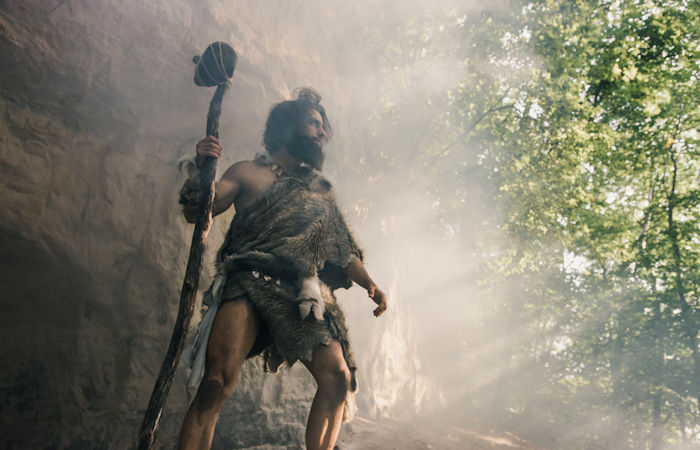Neanderthals: How A Carnivore Diet May Have Led To Their Demise
AncientPages.com - Imagine that you have an unhealthy interest in your neighbors' lives. Unable to ask them directly, you rifle through their rubbish bins. You find the bones of cooked chickens and try and work out what else they eat.
This is a bit like how archaeologists study the diets of extinct humans such as the Neanderthals and early homo sapiens. This is about more than satisfying curiosity. Understanding our ancestors' diets may reveal critical clues about their evolutionary success or failure.
Credit: Adobe Stock - Gorodenkoff
A recent study which analyzed zinc from the tooth of a Neanderthal from Spain reveals they were mainly carnivores, wherever they lived. This discovery helps explain why they became extinct.
Neanderthals dominated Europe and western Asia during the last 200,000 years of the Ice Age, while homo sapiens were developing in Africa. Their remains and characteristic stone tools are abundant across Europe and the near East, and in smaller numbers as far east as Tadjikistan (which shares a border with China).
The Neanderthals lived in the heartlands of the Eurasian steppes (the largest grassland in the world, extending from Hungary to China), an area not rich in nutritional vegetables. But surveys of their campsites have revealed they ate nuts, fruits, mushrooms, shellfish and other food that can be easily gathered.
Neanderthals were a species constantly on the move who needed a high calorie diet. The butchered remains of horse, reindeer, bison and mammoths that Neanderthals left on their campsites reveal they hunted the most dangerous animals in their world. But that doesn't tell us whether their diets varied from group to group across their massive range.
Low carb diet
For the last two decades, advances in molecular biology have deepened archaeologists' understanding of early human diets. The cool conditions in northern Europe, such as France and Germany, help preserve collagen in fossil bone. With a technique called stable isotope analysis we can recover minute amounts of carbon and nitrogen from the collagen in early human bones, and find out where the protein they ate came from.
Cutmarks left by stone tools on this wing bone of a velvet scoter (sea duck), show that. smaller animals were part of Neanderthals’ diet. Sabine Gaudzinski-Windheuser, Author provided
Isotopes are groups of atoms belonging to the same element but have different mass. Studies of these bones' isotopes have shown Neanderthals in northern Europe got 80–90% of their protein from animals. That's up there with the wolves and hyenas. In the arid southern parts of Europe we're not so lucky. Collagen in fossil bone easily disintegrates in warmer climates, taking with it the clues to southern Neanderthals' diets.
But over the last year archaeologists have found that traces of zinc in Neanderthal bones also preserve information about the diet of the ancient person who they belong to.
Studies over the last few years of zinc isotopes show they have huge potential for unlocking clues about the evolution of life such as the rise of eukaryotes, a group of organism which humans belong to, and the complexity of marine food webs.
Expert hunters
The zinc level in carnivores' bones is lower than those of their prey. The difference is not affected by age, sex or decay over time. Zinc ratios can be measured from samples as small as 1mg of bone. Even these tiny amounts allow an accurate assessment of an animal's place in the food chain when they were alive.
The recent study's analysis of zinc from the tooth enamel of a Neanderthal, who lived and died around 150,000 years ago in the Spanish Pyrenees, gives new insights into the diet of ancient humans. Zinc isotopes were analyzed from 43 teeth of 12 animal species living in a grassland around the Los Moros I cave in Catalonia, Spain. These included carnivores such as wolf, hyena and dhole (also known as mountain wolf), omnivorous cave bears, and herbivores including ibex, red deer, horse and rabbit. The results brought to life a food web of the Pleistocene steppe, a system of interlocking food chains from plants up to the top carnivores. The zinc in the Neanderthal's tooth had by far the lowest zinc value in the food web, revealing they were a top level carnivore.
The bone heaps on Neanderthal campsites show they hunted big animals in large numbers. These heaps appear even in areas of the landscape where humans would be at a disadvantage, such as at the edge of water courses. Imagine trying to bayonet an adult bison or horse. Both weigh almost a ton. The new isotope study reveals Neanderthals' main survival strategy was to hunt whatever animals could be found wherever they were in the world. Small animals and vegetables probably amounted to little more than side dishes. Their game plan was to shoot first, and answer questions later.
Broader diets made us more resilient
Isotopes taken from sites across Europe from remains of the Homo sapiens groups who inherited Pleistocene Eurasia from the Neanderthals reveal they had broader dietary range. Plants, birds and fish were main courses for these early humans. The Pleistocene was a the grassland-steppe ecosystem that dominated Siberia during the Pleistocene and disappeared 10,000 years ago. It had a remarkably unstable climate and changed from dry grasslands and wet tundras to coniferous woodlands, constantly shaking up the variety and number of large herbivores grazing there.
The impact from a spear on this pelvic bone of an adult fallow deer shows Neanderthals were hunting with bayonet-style spears around 120,000 years ago. Sabine Gaudzinski-Windheuser., Author provided
So an omnivorous diet would have made these people far more resilient than those who relied on big game hunting. We don't know much about what happened to Neanderthals when big game populations collapsed. If reindeer failed to show, what could they do? But with rapid progress in biomolecular science, I doubt we will have to wait long to find out.
Written by Paul Pettitt, Professor in the Department of Archaeology, Durham University
Provided by The Conversation
This article is republished from The Conversation under a Creative Commons license. Read the original article.
More From Ancient Pages
-
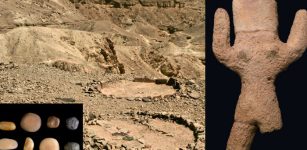 Ancient Artifacts Used In Magical Rituals To Ward Off The Evil Eye Found Next To The Pilgrimage Road
Archaeology | Sep 11, 2023
Ancient Artifacts Used In Magical Rituals To Ward Off The Evil Eye Found Next To The Pilgrimage Road
Archaeology | Sep 11, 2023 -
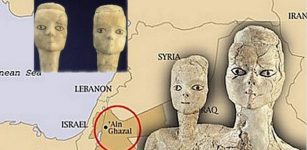 Stone Age Statues Were Taken To Britain For Restoration In 1990 – Never Returned Home To Jordan
News | Apr 6, 2021
Stone Age Statues Were Taken To Britain For Restoration In 1990 – Never Returned Home To Jordan
News | Apr 6, 2021 -
 Nemesis: Winged Goddess Of Justice And Revenge
Featured Stories | Jun 2, 2016
Nemesis: Winged Goddess Of Justice And Revenge
Featured Stories | Jun 2, 2016 -
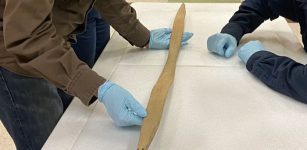 Still Intact 460-Year-Old Bow Found Underwater In Alaska Baffles Scientists – Where Did It Come From?
Archaeology | Mar 17, 2022
Still Intact 460-Year-Old Bow Found Underwater In Alaska Baffles Scientists – Where Did It Come From?
Archaeology | Mar 17, 2022 -
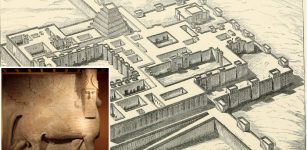 Magnetic Survey Finds Huge Previously Unknown Ancient Buildings In Abandoned Assyrian Capital Khorsabad
Archaeology | Dec 20, 2024
Magnetic Survey Finds Huge Previously Unknown Ancient Buildings In Abandoned Assyrian Capital Khorsabad
Archaeology | Dec 20, 2024 -
 Unusual High-Tech Machine In The Bible Offers Evidence Of Lost Ancient Advanced Civilization
Ancient Mysteries | Aug 18, 2018
Unusual High-Tech Machine In The Bible Offers Evidence Of Lost Ancient Advanced Civilization
Ancient Mysteries | Aug 18, 2018 -
 Boann – The Goddess Who Gave Life To The River Boyne In Celtic Mythology
Celtic Mythology | Jun 9, 2018
Boann – The Goddess Who Gave Life To The River Boyne In Celtic Mythology
Celtic Mythology | Jun 9, 2018 -
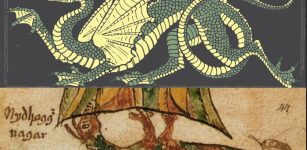 Nidhogg – Dreadful Winged Corpse-Eating Dragon Who Is Enemy Of Asgard And Yggdrasil Tree
Featured Stories | May 9, 2020
Nidhogg – Dreadful Winged Corpse-Eating Dragon Who Is Enemy Of Asgard And Yggdrasil Tree
Featured Stories | May 9, 2020 -
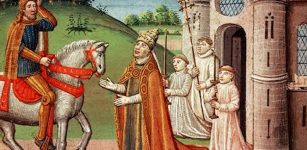 Medieval Warhorses Were Pony-Sized And Much Smaller Than Previously Thought
Archaeology | Jan 11, 2022
Medieval Warhorses Were Pony-Sized And Much Smaller Than Previously Thought
Archaeology | Jan 11, 2022 -
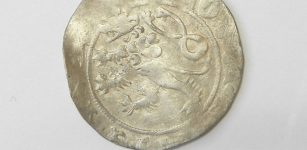 Remarkable Archaeological Discoveries Made Near Bratislava, Slovakia
Archaeology | Oct 28, 2023
Remarkable Archaeological Discoveries Made Near Bratislava, Slovakia
Archaeology | Oct 28, 2023 -
 On This Day In History: Edict Of Pistres ‘A New Law’ Against Viking Raids Issued – On July 25, 864
News | Jul 25, 2016
On This Day In History: Edict Of Pistres ‘A New Law’ Against Viking Raids Issued – On July 25, 864
News | Jul 25, 2016 -
 Look Inside A Restored Pompeii House – A Unique Glimpse Into Life In Italy’s Ancient City
Archaeology | Jan 11, 2023
Look Inside A Restored Pompeii House – A Unique Glimpse Into Life In Italy’s Ancient City
Archaeology | Jan 11, 2023 -
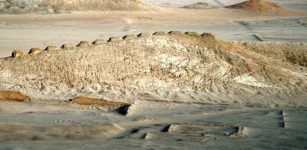 Chankillo: A 2300-Year-Old Solar Observatory in Peru
Civilizations | Sep 2, 2015
Chankillo: A 2300-Year-Old Solar Observatory in Peru
Civilizations | Sep 2, 2015 -
 Chocolate Was A ‘Hot Property’ In 17th Century England And There Were Rules For Safe Consumption
Featured Stories | Jun 27, 2018
Chocolate Was A ‘Hot Property’ In 17th Century England And There Were Rules For Safe Consumption
Featured Stories | Jun 27, 2018 -
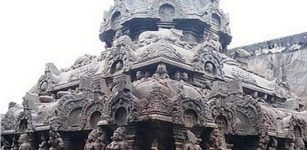 Vettuvan Koil Temple Spectacular Monolith Dedicated To Lord Shiva And Built By Pandya Dynasty
Featured Stories | May 25, 2021
Vettuvan Koil Temple Spectacular Monolith Dedicated To Lord Shiva And Built By Pandya Dynasty
Featured Stories | May 25, 2021 -
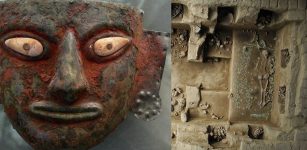 Lady Cao – Moche Queen Who Re-Wrote Ancient History
Civilizations | Jan 12, 2018
Lady Cao – Moche Queen Who Re-Wrote Ancient History
Civilizations | Jan 12, 2018 -
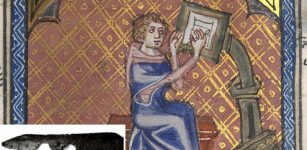 Unusual Medieval Knife Used Like An Eraser Discovered In Poland
Archaeology | Feb 16, 2018
Unusual Medieval Knife Used Like An Eraser Discovered In Poland
Archaeology | Feb 16, 2018 -
 Silver And Bronze Coins Discovered In Ancient Roman Fort Apsaros, Georgia
Archaeology | Jul 23, 2018
Silver And Bronze Coins Discovered In Ancient Roman Fort Apsaros, Georgia
Archaeology | Jul 23, 2018 -
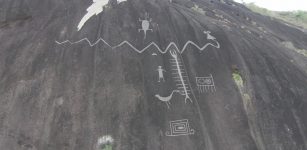 Largest Ever Recorded Ancient Petroglyphs Found In Venezuela – Mapped
Archaeology | Dec 10, 2017
Largest Ever Recorded Ancient Petroglyphs Found In Venezuela – Mapped
Archaeology | Dec 10, 2017 -
 Jure Grando – First ‘Real’ Historical Vampire Case Documented
Featured Stories | Jun 16, 2021
Jure Grando – First ‘Real’ Historical Vampire Case Documented
Featured Stories | Jun 16, 2021

